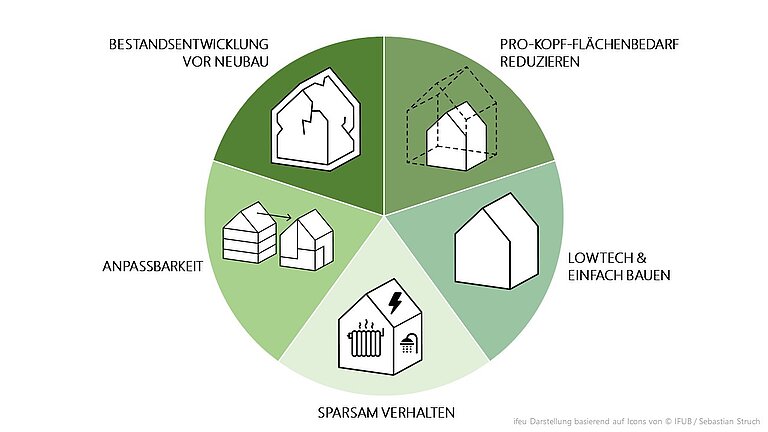Study on sufficiency approaches in the building sector published: stronger anchoring of sufficiency recommended

In the building sector, there is great pressure to act to meet climate and sustainability targets due to the massive ecological impact. Previous transformation approaches have focused predominantly on the sustainability strategies of efficiency and consistency.
The study "Supporting Sufficiency Approaches in the Building Sector", commissioned by the Federal Institute for Research on Building, Urban Affairs and Spatial Development (BBSR), lays the foundations for systematically complementing technical approaches with building sufficiency approaches. Five overarching goals of building sufficiency are defined: giving priority to existing buildings instead of new construction, reduction of per capita space requirements, adaptability, low-tech and sparing user behaviour. The report describes the status quo and thus the relevance of the topic, names selected lighthouse projects and quantifies the potential for reducing the environmental impact of buildings through sufficiency approaches. In the best-case scenario, annual greenhouse gas emissions from the operation of buildings are reduced by around 11 million metric tons and gray emissions (emitted during the production of building materials and buildings) by around 9 million metric tons. In order to show decision-makers and practitioners how the calculated sufficiency potentials can be leveraged, the study concludes with the compilation of eight concrete profiles of policy approaches and instruments. The proposals developed address both the communication of sufficiency and its promotion in consultation, planning processes and the implementation of measures.
More information on the project can be found here and on the BBSR website.
You can read the study here (in German).
Contact
Dr. Lars-Arvid Brischke
lars.brischke@ifeu.de
+49 (0)30 2844578 18
To profile
